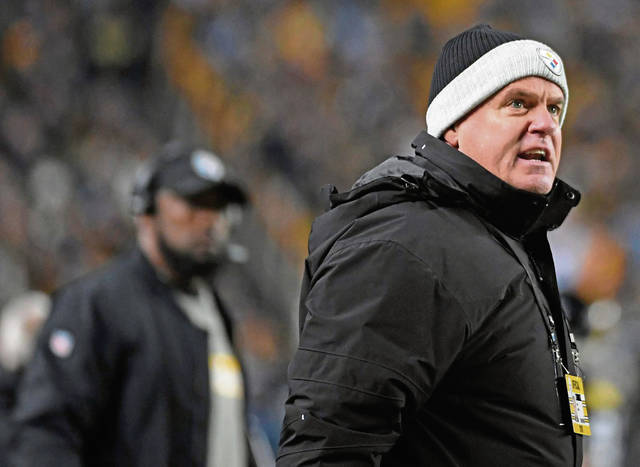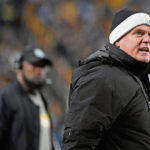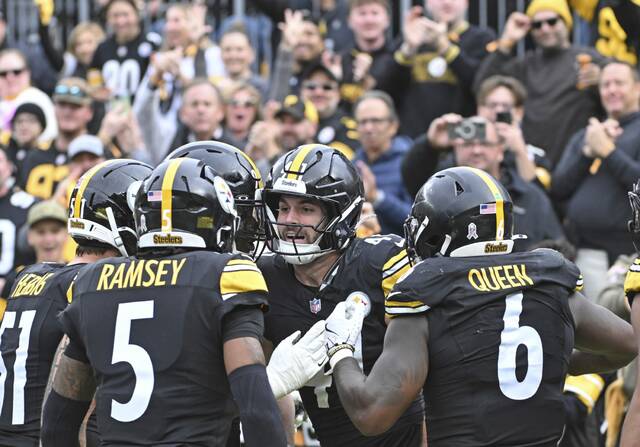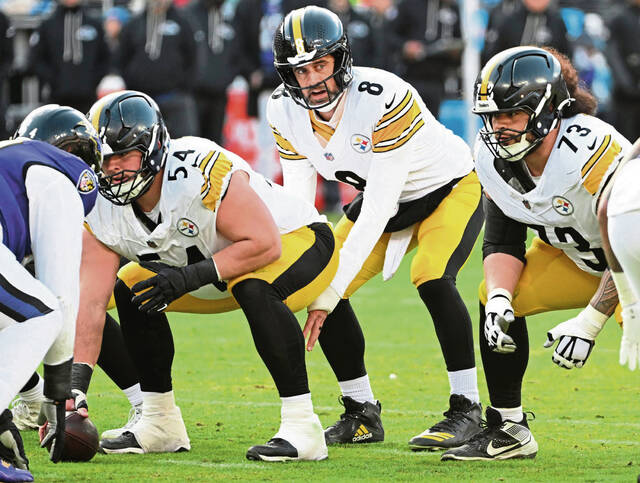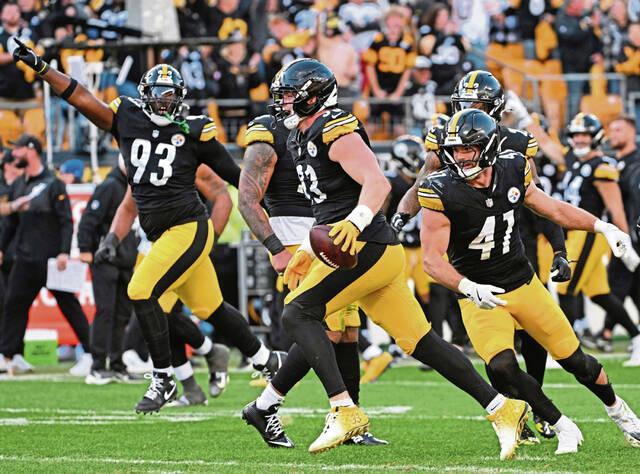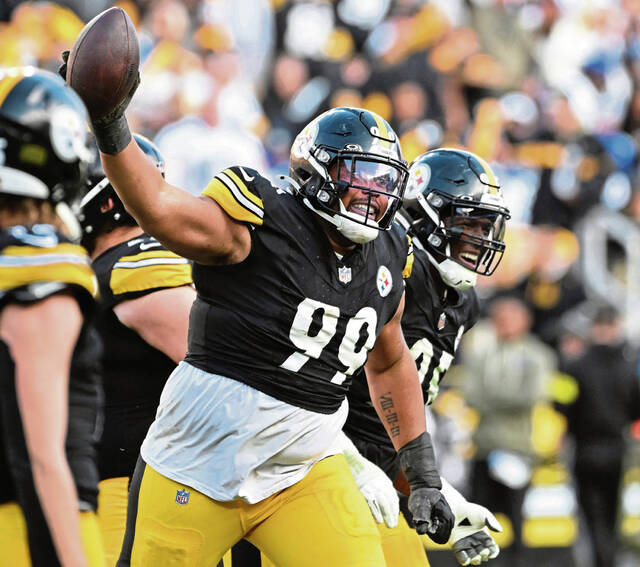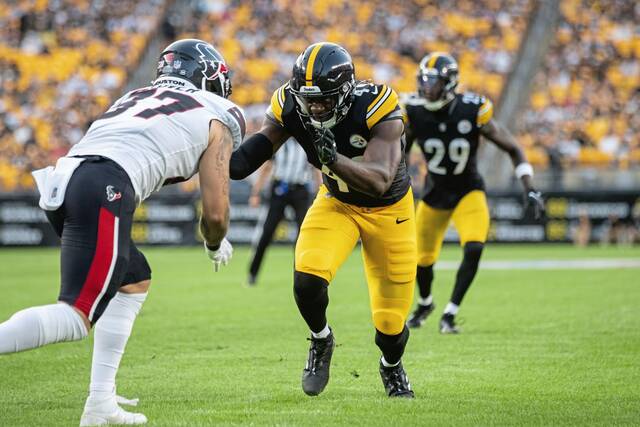The only thing worse than the Pittsburgh Steelers trading Antonio Brown to the Oakland Raiders for third- and fifth-round draft picks was their weak attempt at defending it.
In an interview with Steelers.com, general manager Kevin Colbert tried to put a positive spin on a disaster of a deal by explaining how the team negotiated with Brown’s agent, Drew Rosenhaus, and why the Nos. 66 and 141 picks were good value for a four-time All-Pro wide receiver who had 104 catches for 1,297 yards and 15 touchdowns in 2018.
“We talked about (how) we were willing to look into making a trade but we were specific that the trade would only be made if we felt it was beneficial to the Pittsburgh Steelers,” Colbert said. “When we were able to get a third-round pick and a fifth-round pick, particularly where those picks were, the third and fifth picks put together gives us four picks in the top 83 when we include our own third-round pick, and it gives us 10 picks overall in a draft that we think is a draft that’s beneficial to have as many picks as you can get.”
Never mind the Raiders have four picks in the top 35, including three in the first round (Nos. 4, 24 and 27), or that the New York Giants received the Nos. 17 and 95 picks and safety Jabrill Peppers in exchange for superstar receiver Odell Beckham Jr. Or, by the way, the reports Beckham Jr. now wants to restructure his five-year, $90-million deal for guaranteed money beyond the 2019 season.
Colbert also admitted Brown’s refusal to report factored into the fallout of a reported deal with Buffalo that would have involved the swapping of the Steelers’ first-round pick (No. 20) for the Bills’ No. 9 overall pick and a pair of mid-round selections.
“Any player in the National Football League, if he gets traded, he has to show up and take a physical with his new team. If he doesn’t do that, that player reverts back to whoever traded him,” Colbert said. “We always measured what the compensation would be if we got him versus not having the player. The two picks that we got, especially in this draft, we felt would benefit us in the long run.”
This draft better benefit them because the trade was a dud.
1. Finding gems
The Steelers deserve credit for finding future stars at wide receiver in the middle rounds of the NFL Draft, from Mike Wallace and Emmanuel Sanders in the third round to Antonio Brown in the sixth to Martavis Bryant in the fourth.
But they also have had some third-round receivers who have ranged from disappointments such as Markus Wheaton and Sammie Coates to full-blown busts such as Dri Archer. No wonder the Steelers have drafted receivers in the second round the past two years in JuJu Smith-Schuster and James Washington.
Signing free agent Donte Moncrief provides depth at receiver, but consider the disparity in production: Moncrief had 152 catches for 1,875 yards and 18 touchdowns in 53 games in his first four seasons with the Colts and 48 catches for 668 yards and three touchdowns last season in Jacksonville.
By comparison, Brown had 138 catches for 1,815 yards and 13 touchdowns in 17 games in 2014, 143 catches for 1,953 yards and 10 touchdowns in 17 games in ’15 and 124 catches for 1,593 yards and 14 touchdowns in 18 games in ’16.
There’s no comparison.
2. Flops in fifth
Where the third round has produced starters in defensive tackle Javon Hargrave and running back James Conner in recent years, the Steelers haven’t had as much luck in the fifth.
The names are rather forgettable, from Chris Carter and Chris Rainey to Terry Hawthorne and Wesley Johnson.
They found a starter in Jesse James in 2015, but the Steelers allowed the tight end to leave in free agency. The others are backups: cornerback Brian Allen, safety Marcus Allen and running back Jaylen Samuels.
In fairness, the picks they received from Oakland are high in their respective rounds, so they could be viewed by the Steelers as bottom second- and fourth-round picks. They just don’t know whether they will get a Smith-Schuster (No. 62), Washington (60) and Marcus Gilbert (63) or a Senquez Golson or Mike Adams (both 56).
The Steelers haven’t fared well in the fourth round, either, drafting the likes of Shamarko Thomas, Landry Jones, Doran Grant, Jerald Hawkins and Josh Dobbs. Only Bryant (2014) made an immediate impact.
3. Magic moves
If there is hope for the Steelers, it’s more in the precedent than the present.
When Santonio Holmes went from Super Bowl XLIII MVP to being shipped to the New York Jets in April 2010, it was in return for a fifth-rounder. The Steelers flipped that pick to the Arizona Cardinals for cornerback Bryant McFadden and a sixth-rounder, which they used to draft none other than Antonio Brown.
Don’t get your hopes up for another sixth-round steal, as Brown was a once-in-a-lifetime pick.
But it’s possible the Steelers could package their extra picks to move up in the first round, like they did to select Troy Polamalu in 2003 and Holmes in ’06. They dealt the Nos. 27, 92 and 200 picks to Kansas City to take Polamalu at 16. They dealt the Nos. 32, 96 and 129 to the New York Giants to take Holmes at 25.
The Bills reportedly were willing to part with No. 9.
4. Low road
Where Brown set fire to the locker room and front office while burning every bridge on his way out of town, Le’Veon Bell simply walked away from the franchise tag and franchise.
Where Brown got traded and a new contract for $50 million over three years ($30.125 million guaranteed), Bell was granted free agency and signed with the Jets for four years and $52.5 million ($35 million guaranteed).
Brown got exactly what he wanted, while Bell didn’t get what he expected. But both got more guaranteed money than the Steelers offered, which makes me wonder why they were willing to give a pair of All-Pros in their prime big contracts but not the guarantees.
5. High road
There’s no way to put a positive spin on the Steelers giving up two of the NFL’s best players at their positions for three mid-round draft picks (they’re expected to receive a third-round compensatory pick for losing Bell), so why try?
The Steelers stood by Bell through injuries, suspensions and his skipping training camp and Brown through his locker-room live stream, “trade me” tweet and sideline tantrums.
But both players committed a cardinal sin by putting themselves above the team, and that ultimately forced the Steelers to sever ties. While they deserve credit for taking the high road, the Steelers shouldn’t pretend they got good returns for Bell and Brown.
Here’s what the Steelers should have said: When it comes to production, we think Bell and Brown are worth every penny they got. When it comes to the future of our team, we just didn’t think they were worth the trouble anymore.
Hey, Steelers Nation, get the latest news about the Pittsburgh Steelers here.



